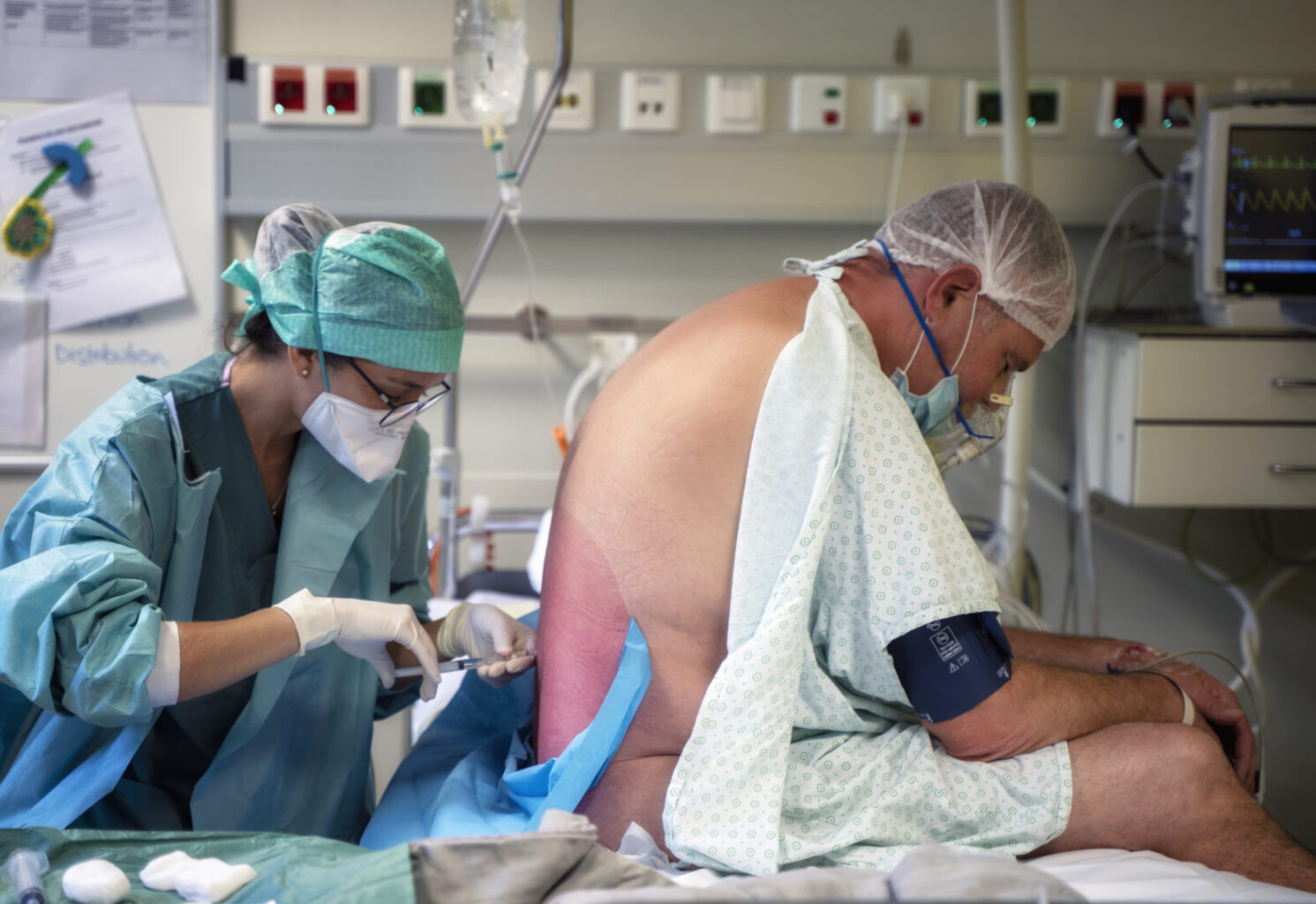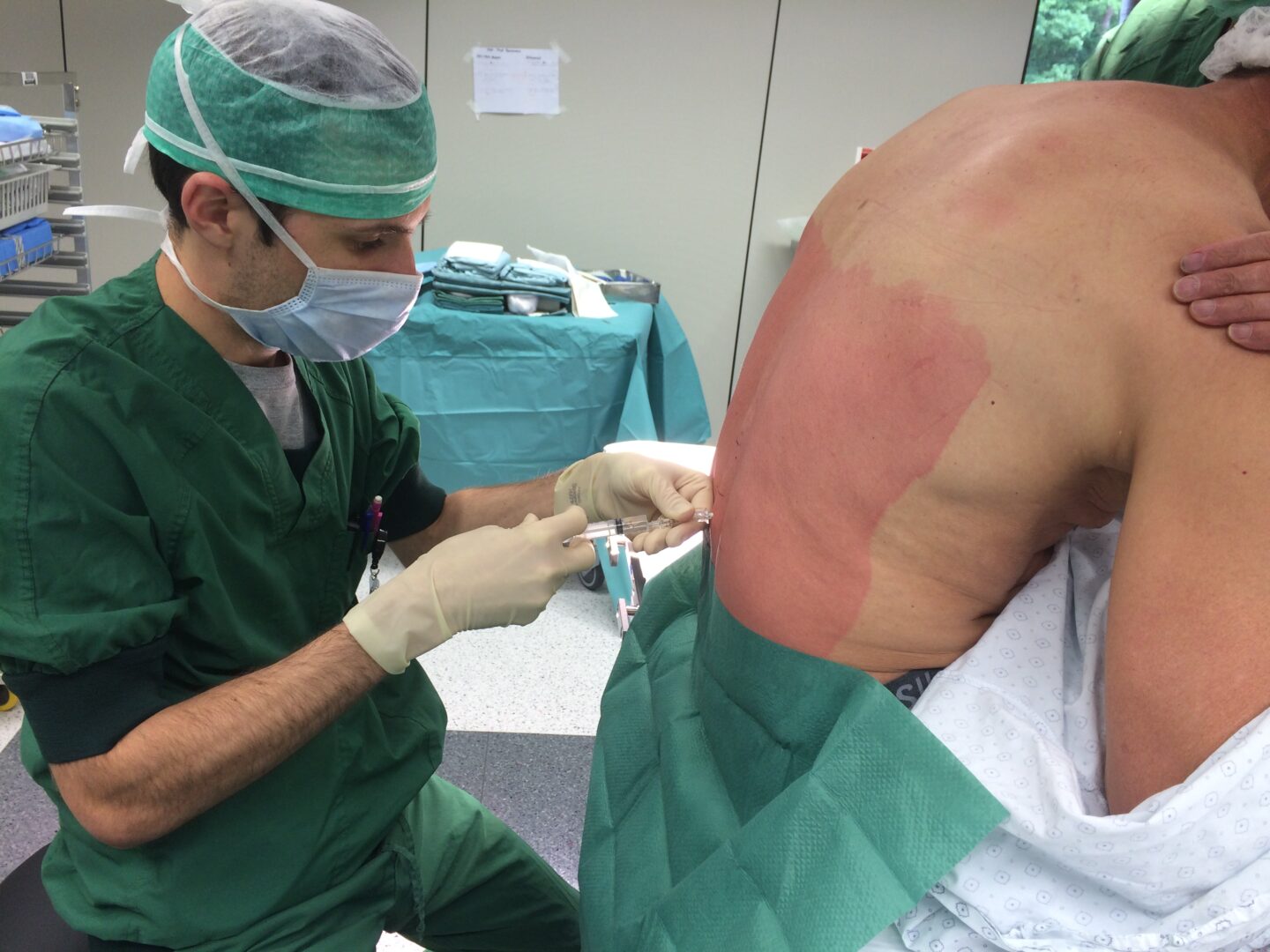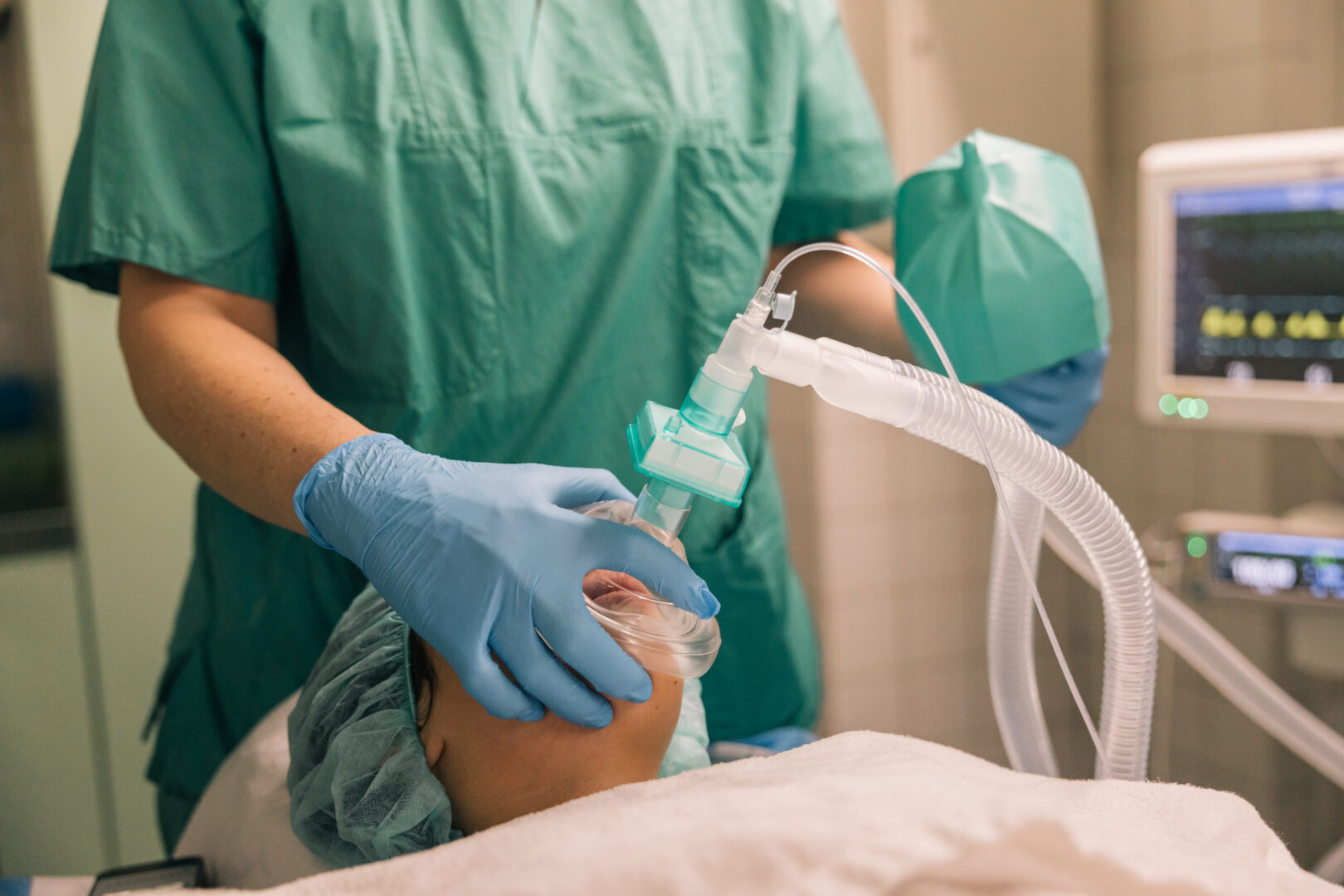What is spinal anesthesia?
Spinal anesthesia is a form of regional anesthesia where a small amount of anesthetic medication is injected directly into the fluid surrounding the spinal cord. This injection quickly numbs the nerves, blocking sensation in the lower half of the body. Unlike general anesthesia, which renders you completely unconscious, spinal anesthesia keeps you awake and aware while preventing any discomfort during the procedure. It is an effective way to provide targeted pain relief without affecting the rest of your body, and especially your brain.
When is spinal anesthesia administered?
Spinal anesthesia is typically administered for surgeries below the waist, such as cesarean sections (C-sections), hip or knee replacements, and various types of bladder or prostate surgeries. An anesthesiologist will carefully assess whether spinal anesthesia is the most suitable choice for your procedure, ensuring you receive the safest and most effective pain relief.
What does it feel like to receive spinal anesthesia?
When you receive spinal anesthesia, you may feel a brief stinging sensation as the local anesthetic is applied to numb the skin. After that, you might feel pressure or a slight tingling sensation as the anesthetic is injected into the fluid around the spinal cord. The numbing sensation begins almost immediately, and you may experience a warm sensation in your legs as they become numb. Any discomfort usually subsides quickly, and the anesthetic will block the pain in the lower half of your body during the surgery.
How long does spinal anesthesia last?
The effects of spinal anesthesia usually last for about 1.5 to 4 hours, depending on the type and amount of anesthetic used. This is generally sufficient to block pain during most surgeries below the waist. If the surgery takes longer, additional measures can be taken to maintain or provide supplemental pain relief.
Are there any side effects or risks associated with spinal anesthesia?
As with any medical procedure, spinal anesthesia does carry some risks.
Common side effects may include:
- A drop in blood pressure
- Headaches
- Back pain at the injection site
- Temporary difficulty urinating
Serious complications of spinal anesthesia are exceedingly rare. Anesthesiologists are highly trained medical professionals who minimize these risks by developing high degree of proficiency in spinal anesthesia techniques and by keeping an eye on you during and after the procedure.

Anesthesiologist performing a spinal anesthesia injection. The patient is sitting up while assuming a slightly back-curved position. After injecting a small dose of numbing medicine, the anesthesiology then places the spinal needle in the spinal canal, often without any additional discomfort to the patient. The entire procedure typically takes a few minutes, with needle insertion lasting only a few seconds.








